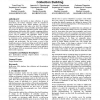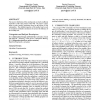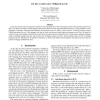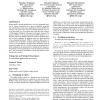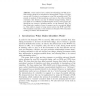117 search results - page 3 / 24 » Efficient identification of Web communities |
JCDL
2006
ACM
14 years 22 hour ago
2006
ACM
Biological studies rely heavily on large collections of species observations. All of these collections cannot be compiled by biology professionals alone. Skilled amateurs can assi...
WWW
2004
ACM
14 years 6 months ago
2004
ACM
The massive distribution of the crawling task can lead to inefficient exploration of the same portion of the Web. We propose a technique to guide crawlers exploration based on the...
LREC
2010
13 years 7 months ago
2010
As the data for more and more languages is finding its way into digital form, with an increasing amount of this data being posted to the Web, it has become possible to collect lan...
KDD
2008
ACM
14 years 6 months ago
2008
ACM
Hidden Markov models (HMMs) have received considerable attention in various communities (e.g, speech recognition, neurology and bioinformatic) since many applications that use HMM...
ESWS
2008
Springer
13 years 7 months ago
2008
Springer
Abstract. If one wants to have a scheme for identifying non-Web accessible entities, should it be centralized or decentralized? Given a URI, how can one tell if it refers to a web ...
